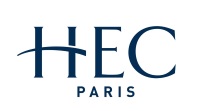No 635: A Time Varying Parameter Model to Test for Predictability and Integration in Stock Markets of Transition Economies
ROCKINGER Michael and URGA Giovanni
Abstract: This paper introduces a model, based on the Kalman filter framework, which allows for latent factors, time varying parameters, and a general GARCH structure for the residuals, extending the Bekaert and Harvey (1997) model. With this extension it is possible to test if an emerging stock market becomes more efficient over time and more integrated with other already established markets.
We apply this models to the Czech, Polish, Hungarian, and Russian stock markets. We use data at daily frequency running from April 7th 1994 to July 10th 1997. We show that those markets have a rather heterogeneous pattern with regard to seasonalities and exhibit significant asymmetric GARCH effects where bad news generate greater volatility. In Hungary good news, instead, generate greater volatility leads us to formulate a liquidity hypothesis.
A latent factor captures macroeconomic expectations. Concerning predictability, measured with time varying autocorrelations, Hungary reached efficiency before 1994. Russia shows signs of ongoing convergence towards efficiency. For Poland and the Czech Republic we find no improvements. With regard to market integration there is evidence that the importance of Germany has changed over time for all markets. Shocks in the UK are positively related to the Czech and Polish market but neither with the Russian nor the Hungarian ones. Shocks in the US have no impact on these markets but Russia. A strong negative correlation between Russia and the US and Germany tends to disappear.
Keywords: Central and Eastern Europe; stock indices; predictability; market integration
40 pages, January 2, 1998
Full text files
8c55d1f2745a258dababccb61e695eb7.pdf
Questions (including download problems) about the papers in this series should be directed to Antoine Haldemann ()
Report other problems with accessing this service to Sune Karlsson ().
RePEc:ebg:heccah:0635This page generated on 2025-06-10 11:14:55.

